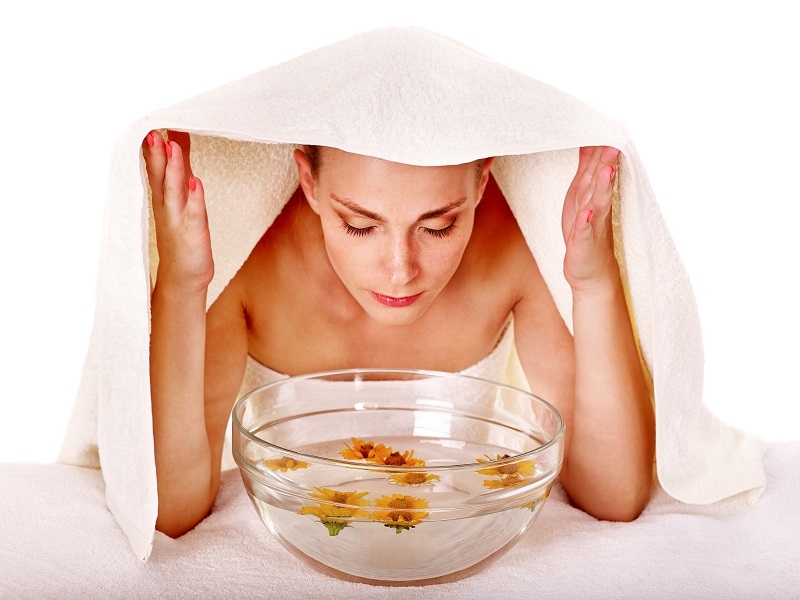The Ultimate Orchid Care Handbook
Posted on 22/08/2025
The Ultimate Orchid Care Handbook
Orchids are renowned for their exotic beauty, intricate blooms, and captivating elegance. Whether you're a beginner plant enthusiast or an experienced gardener, growing orchids can be both rewarding and challenging. This comprehensive guide explores orchid care essentials and provides you with the ultimate tips for maintaining healthy and thriving orchids in your home.
Why Orchids Are So Popular
Orchids have fascinated people for centuries with their diverse shapes, sizes, and vibrant colors. These stunning plants symbolize luxury, refinement, and rare beauty, often appearing as centerpieces in homes and gardens. Some of the most popular varieties include Phalaenopsis (moth orchids), Cattleya, Dendrobium, and Oncidium.
- Longevity: With the right care, orchids can rebloom and last for years.
- Variety: Thousands of species and hybrids offer endless options for collectors.
- Air Purification: They help purify indoor air, contributing to a healthier environment.
- Symbolic Value: Orchids are associated with love, strength, and sophistication.

Understanding Orchid Types
Before delving into the world of orchid care, it's important to understand the differences among the main varieties you'll encounter. Each type has its own specific requirements when it comes to watering, light, and growing media.
Phalaenopsis Orchids (Moth Orchids)
- Blooms: Last for several months, easy to grow indoors.
- Light: Bright, indirect sunlight is best.
- Water: Allow the potting mix to dry out between waterings.
Cattleya Orchids
- Blooms: Large, vibrant, often fragrant flowers.
- Light: Prefer more light than Phalaenopsis, tolerate some direct sun.
- Water: Water thoroughly, but let dry out before watering again.
Dendrobium Orchids
- Blooms: Delicate, sometimes clustered flowers.
- Light: Like bright, indirect to medium sunlight.
- Water: Need more water during the active growth phase.
Oncidium Orchids (Dancing Lady Orchids)
- Blooms: Small, profuse flowers resembling dancing figures.
- Light: Enjoy bright filtered light.
- Water: Sensitive to overwatering, allow to dry between watering.
Key Elements of Orchid Care: The Essentials
Caring for orchids isn't difficult when you understand their unique needs. Let's explore the most important aspects of orchid wellness and maintenance.
Choosing the Right Orchid Potting Media
Unlike many houseplants, orchids are epiphytes, meaning they naturally grow on trees or rocks, not in soil. The best potting mix mimics their native environment and encourages healthy root growth.
- Bark chips: Excellent for air circulation.
- Sphagnum moss: Retains moisture, good for young plants.
- Coconut husk fibers: Sustainable and breathable.
- Perlite or charcoal: Improve drainage, reduce odor.
Lighting: Providing the Ideal Orchid Environment
Proper lighting is perhaps the most crucial component of successful orchid care. Most orchids thrive in bright, indirect sunlight. Too much sun can scorch their leaves, while too little inhibits blooming.
- East or west-facing windows: Ideal spots for orchids in your home.
- Use sheer curtains to diffuse harsh light.
- Fluorescent grow lights can supplement natural light in darker rooms.
- Monitor the color of your orchid's leaves: Dark green means not enough light, yellowish green is just right.
Watering Orchids: Best Practices
Overwatering is the number one cause of orchid problems. Follow these simple guidelines for watering:
- Water early in the day to allow leaves to dry by nightfall.
- Check the potting media; if it's dry an inch below the surface, it's time to water.
- Use room temperature water, and avoid waterlogging the roots.
- Reduce watering frequency in winter when growth slows.
Tip: In general, it's better to underwater than overwater!
Feeding Orchids: Selecting the Right Fertilizer
Healthy, vibrant orchids need nutrients. Use a balanced fertilizer designed for orchids, such as 20-20-20, and dilute it to half-strength.
- Feed orchids every two to four weeks during the growing season.
- Flush out the potting mix with plain water occasionally to remove salt buildup.
- Never fertilize a dry orchid, as this can damage roots.
Humidity and Air Circulation
Many orchids do best in humidity levels between 40-70%. To increase humidity without harming your plant:
- Place a humidity tray with pebbles and water under the pot (not touching roots).
- Use a room humidifier in dry environments.
- Ensure good air movement, but avoid placing orchids in a draft.
Repotting Orchids: When and How
Orchids should be repotted every one to three years, depending on the deterioration of the potting media or when the roots outgrow the container. Repotting promotes healthy root growth and renews the plant's environment.
- Gently remove the plant from its pot and shake off old media.
- Trim dead or rotting roots with sterilized scissors.
- Place into fresh, moist orchid potting mix and a clean pot.
- Water sparingly after repotting to allow the plant to adjust.
Orchid Blooming: Encouraging Reblooms
One of the delights of orchid care is witnessing the breathtaking spectacle of reblooming. If your orchid is healthy but not flowering, consider the following techniques:
- Light: A boost in light can trigger flowering.
- Temperature changes: Lower nighttime temperatures of about 55-60?F (13-16?C) encourage blooms.
- Fertilization: Use a "bloom booster" fertilizer with higher phosphorous content.
- Patience: Many orchids bloom only once per year, so don't give up if there's a pause between displays.
Pro Tip: After blooms fade, trim the flower spike just above a visible node to sometimes encourage a secondary spike.
Troubleshooting Common Orchid Problems
Even with optimal care, orchids sometimes experience issues. Learning to recognize early warning signs lets you take action before problems escalate.
Yellow Leaves
- Caused by overwatering, too much direct sun, or old age. Remove old leaves only when they're shriveled.
Root Rot
- Usually from overwatering or poor drainage. Repot, trim dead roots, and use fresh mix.
Pests
- Watch for mealybugs, spider mites, and aphids. Wipe leaves with a damp cloth and treat with insecticidal soap if necessary.
Failing to Bloom
- May be due to inadequate light, insufficient feeding, or lack of temperature variation. Adjust care routine accordingly.
Advanced Orchid Care Tips
To truly master orchid cultivation, consider these expert-level strategies:
- Mounting Orchids: Some species love being mounted on bark slabs, simulating their natural habitat.
- Water Quality: Use rainwater or distilled water if your tap water contains high minerals or salts.
- Propagation: Try keiki (baby orchid) propagation for certain Dendrobium and Phalaenopsis varieties.
- Seasonal Care: Adjust light, humidity, and nutrients based on the season for optimal growth.
Creating the Perfect Orchid Display
Displaying orchids adds sophistication and freshness to any space. To showcase your collection like a pro:
- Group by care needs: Arrange orchids with similar humidity and light requirements together.
- Vary heights: Combine tall and short varieties for visual interest.
- Choose elegant pots: Ceramic or glass pots complement orchid beauty. Make sure pots have ample drainage.
- Decorate with moss: Top dress with sphagnum or decorative moss for a polished look.
Year-Round Orchid Care Checklist
- Spring: Repot orchids, increase feeding, and monitor for pests.
- Summer: Watch for heat stress and water more frequently.
- Fall: Reduce watering and start lowering night temperatures to induce flowering.
- Winter: Monitor humidity, use grow lights if daylight is scarce, and watch for drafts.

Frequently Asked Questions (FAQ) about Growing Orchids
How often should I water my orchid?
Watering needs vary by species, potting mix, climate, and season. Typically, once a week is sufficient, but always check the media's moisture before watering.
Should I cut the flower spike after blooms fade?
For Phalaenopsis orchids, trim just above a visible node on the spike. Other varieties may require complete removal at the base.
Why do my orchid's leaves have spots or streaks?
This could indicate fungal or bacterial infection, overwatering, or sunburn. Remove affected leaves and treat with a fungicide if necessary.
What is the best temperature for orchids?
Most orchids thrive in day temperatures between 65-80?F (18-27?C) and nights around 55-65?F (13-18?C).
Conclusion: Become an Orchid Expert
The key to successful orchid care is understanding your plant's individual needs and creating an environment that mirrors their natural habitat. With patience, observation, and our expert tips, you'll soon be rewarded with healthy, reblooming orchids that bring lasting beauty and joy to your home.
Happy growing, and may your home be filled with the enduring elegance of thriving orchids!
Latest Posts
The Ultimate Orchid Care Handbook
From Soil to Bloom: Caring for Hydrangeas
Effortless Office Plants with Low Maintenance Needs






